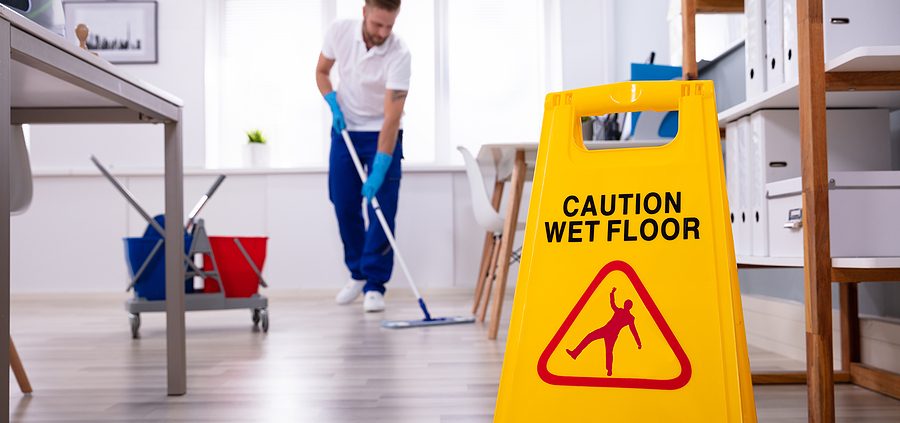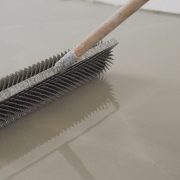Commercial Flooring Maintenance Tips
You’ve invested in quality commercial flooring to bring beauty and elegance to your space. Now it’s time to maintain the look and style you worked so hard to create and ensure the long-lasting beauty of your floors by caring for them with regular flooring maintenance. Follow our commercial flooring maintenance tips to keep your floors in optimal condition.
Create a Flooring Maintenance Plan
First things first, you should have a flooring maintenance plan in place—and this plan should begin as soon as your floors are installed. Your plan should be based on the type of flooring you have and its maintenance needs as well as your budget and the amount of traffic flow your flooring sees. Include steps for both routine cleaning and periodic deep cleaning and maintenance.
For instance, you may take care of routine cleaning on a daily basis for high-traffic areas such as lobbies and main hallways, but only a few times a week for lower-traffic spaces like conference rooms. For deeper cleaning and periodic maintenance, you might have those done monthly for high-traffic areas and semi-annually for low-traffic areas. If you have a solid plan in place, you will be much more likely to stick to a regular maintenance schedule and you will see the results in your flooring.
How to Maintain Commercial Carpet
When it comes to taking care of your carpet, regular vacuuming is the most important part of a routine maintenance plan. Excess dirt in your carpet can abrade the fibers, matte the carpet, and create visible traffic routes, but vacuuming will get rid of the majority of carpet dirt. Make sure to promptly spot clean spills and stains with a cleaner recommended by the carpet manufacturer. When you spot clean, avoid using a scrub brush or bristle brush, as they will damage your carpet fibers: instead, simply use a clean rag to blot the stain.
In addition to regular vacuuming and spot cleaning, there are two deep cleaning methods you will want to add to your maintenance schedule: encapsulation and hot water extraction. In encapsulation, the carpet is vacuumed, then sprayed with a cleaning agent, agitated, and vacuumed again. Encapsulation should be done periodically, depending on traffic flow. In most cases once per quarter is sufficient.
Hot water extraction should be done every few times encapsulation treatments are done. In hot water extraction, the carpet is vacuumed, sprayed, agitated, rinsed with clean water, and dried. Both of these deep cleaning methods should be done by a trained professional to ensure your manufacturer’s warranty remains intact.
How to Maintain Hardwood Floors
Hardwood floors offer so much warmth and beauty to a space, and can last a long time if you maintain them properly. While not especially high-maintenance, hardwood floors do require a gentler touch than other flooring types when cleaning. As with many types of flooring, dirt and debris can cause abrasions in the wood as it is walked on, so it’s important to remove dirt often by sweeping regularly with a broom or dry mop.
Wood floors don’t need to be mopped as often as other flooring types, unless they are in higher-traffic areas. When you do mop, use a microfiber mop or another material that holds onto less water, and wring it out well: too much water can cause hardwood floors to warp. Using the wrong cleaner can also damage the wood, so check with your manufacturer for the best cleaner to use on your hardwood floors.
How to Maintain LVT
LVT, or Luxury Vinyl Tile, is a low-maintenance, no-polish flooring material, so is quite easy to maintain. It should be vacuumed and dust mopped regularly to prevent dirt from being ground into the surface by foot traffic. Mop up spills and spots right away using a neutral cleaner diluted to the level recommended by the manufacturer.
Depending on traffic or how quickly your floor becomes soiled, wet mopping can be done daily, weekly, or as needed. Periodically, LVT should also be deep cleaned using a neutral cleaner and auto scrubber, then rinsed with water. If the flooring has scuff marks, they can be removed with spray buffing.
How to Maintain VCT
VCT—Vinyl Composite Tile—is much more high maintenance than LVT. First, vacuum and wet mop regularly using a manufacturer-recommended neutral cleaner. This helps prevent buildup of debris that can cause abrasions to the tile’s polish. VCT should also periodically be machine scrubbed, with fresh coats of polish added as needed.
Restorative maintenance will also be required occasionally to maintain a sufficient protective barrier on the porous tile. This involves chemically stripping the floor’s old polish before applying a fresh coat and should be done by a professional.
How to Maintain Porcelain Tile
Porcelain tile has a wide range of benefits as a commercial flooring option, such as being both high performance and low maintenance. Porcelain tile should be swept and mopped with a neutral cleaner on a regular basis. Change the water frequently when you mop, especially when mopping high-traffic areas. This is an important step, because soil left on the floor can abrade the tile’s surface. Spills should also be spot cleaned as needed using a manufacturer-recommended cleaner.
Additionally, tile should be periodically deep cleaned with an automated tile floor scrubber to remove any mineral deposits, dirt or grease buildup, and mold, as well as to prevent grout from becoming discolored. Be sure to use cleaners recommended by the manufacturer to give your tile a long life and keep it looking its best.
No matter what type of flooring your building has, it will last longer and hang onto its new-floor beauty for many years if it is properly maintained. That said, there comes a time in every floor’s life when it’s time for repairs or replacement. When that time comes, ATR Floors is here to help. Our team of professionals is skilled in hardwood refinishing, carpet repair, tile repair, and installation of all types of flooring and underlayment. Contact us for all of your flooring needs!





